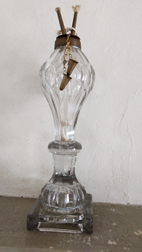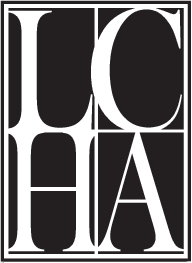Vesta Lamp

In the parlor of the Chapman-Hall two Vesta Lamps sit on the fireplace mantel. These lamps were designed for a new fuel being marketed in 1835, and patented by Henry Porter of Bangor, Maine. That fuel was called camphine (not to be confused with camphene). Camphine is generally distilled from the resin of pine trees, and this liquid is a member of the turpentine family. When used in lamps camphine fuel gives off a wonderful bright light. Because of the nature of how the fuel burned, a new type of lamp had to be developed. This lamp was called Vesta.
The Vesta lamp differs from a whale oil lamp in that the two tubes that hold the wicks form a “V” and they are topped, when not in use, with little caps that prevented the fuel from evaporating. The “V” tubes are also narrower than those used in whale oil lamps. Whale oil lamps could sometimes be outfitted to burn camphine fuel, but camphine fuel was dangerous burned in lamps that were only fitted with tubes meant for whale oil. The Vesta lamp, like the whale oil lamp, did not require a glass chimney, as one thinks of on a kerosene lamp.

Camphine fuel is not a pure substance; it is a very specific mixture of camphine and alcohol. Isaiah Jennings of New York City, was the first to work up the formula in 1830. As mentioned, 1835 Henry Porter patented the formula and he named it Porter’s Burning Fluid. Heading to Boston to market his product was the making of his fame. The new fuel was copied and marketed by numerous companies. Professor Bill Kovarik of Carnegie Mellon University estimated that by 1845, 200 million gallons a year were being produced. Camphine came to the forefront when the availability and price of whale oil were concerns and the use of lard oil lamps was not attractive.
This bright, lovely light came with a down side – it was very flammable out side of the lamp. During the mid-19th Century scores of deaths were caused by accidents involving the lamps. The fading out of camphine use was tied to kerosene becoming available in 1858.
Louise Miller, LCHA Education Director

 Newsletter
Newsletter Join LCHA
Join LCHA Donate Now
Donate Now